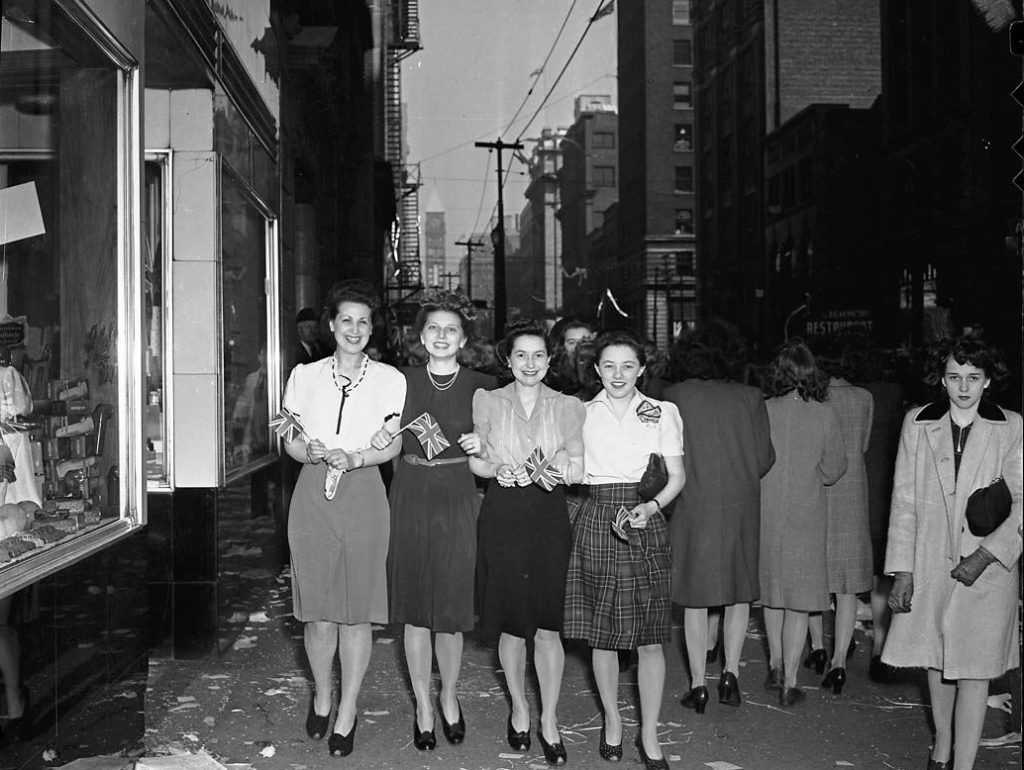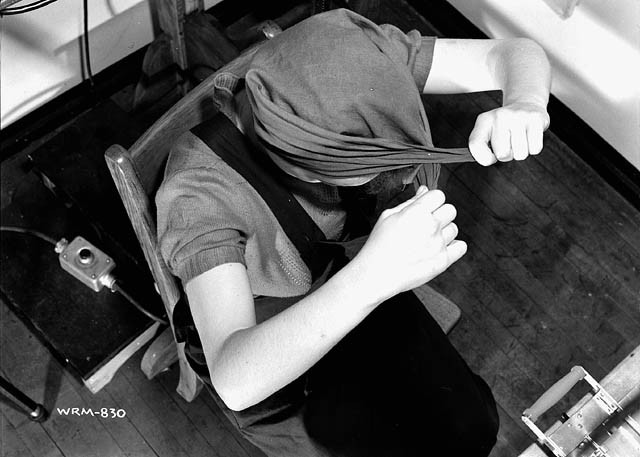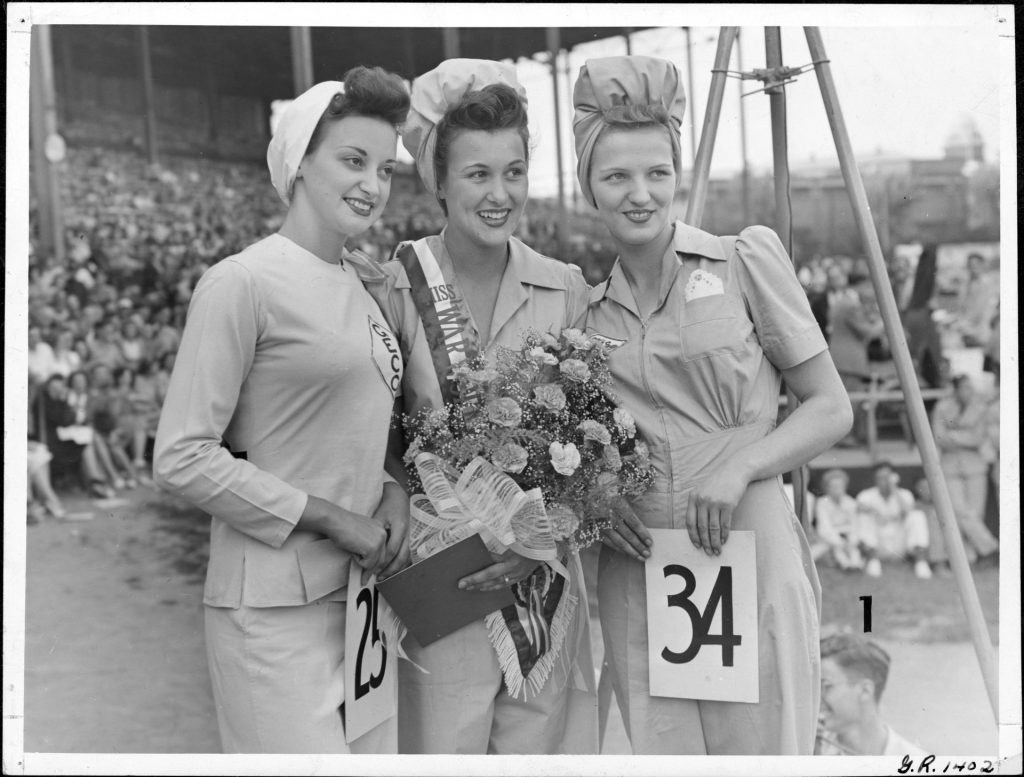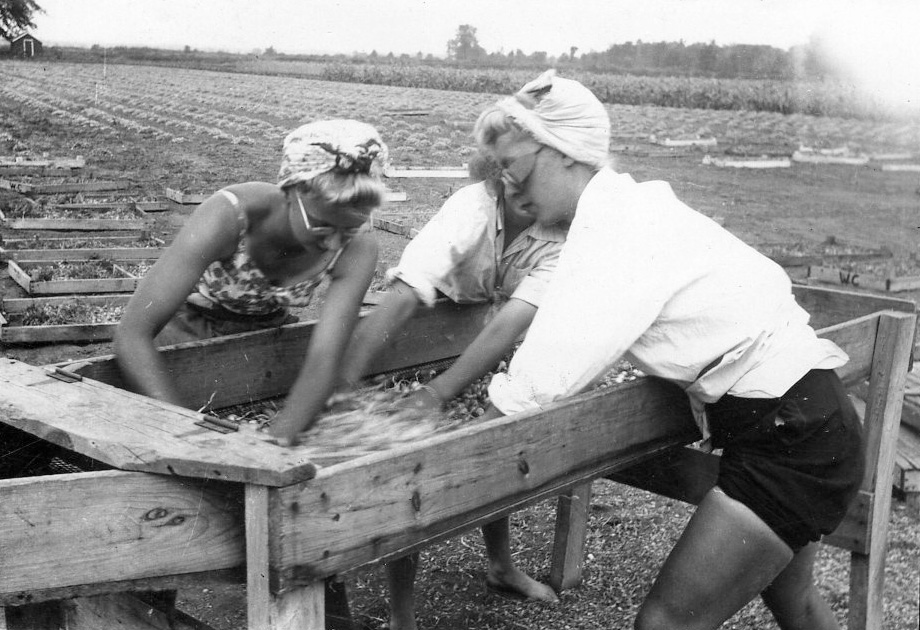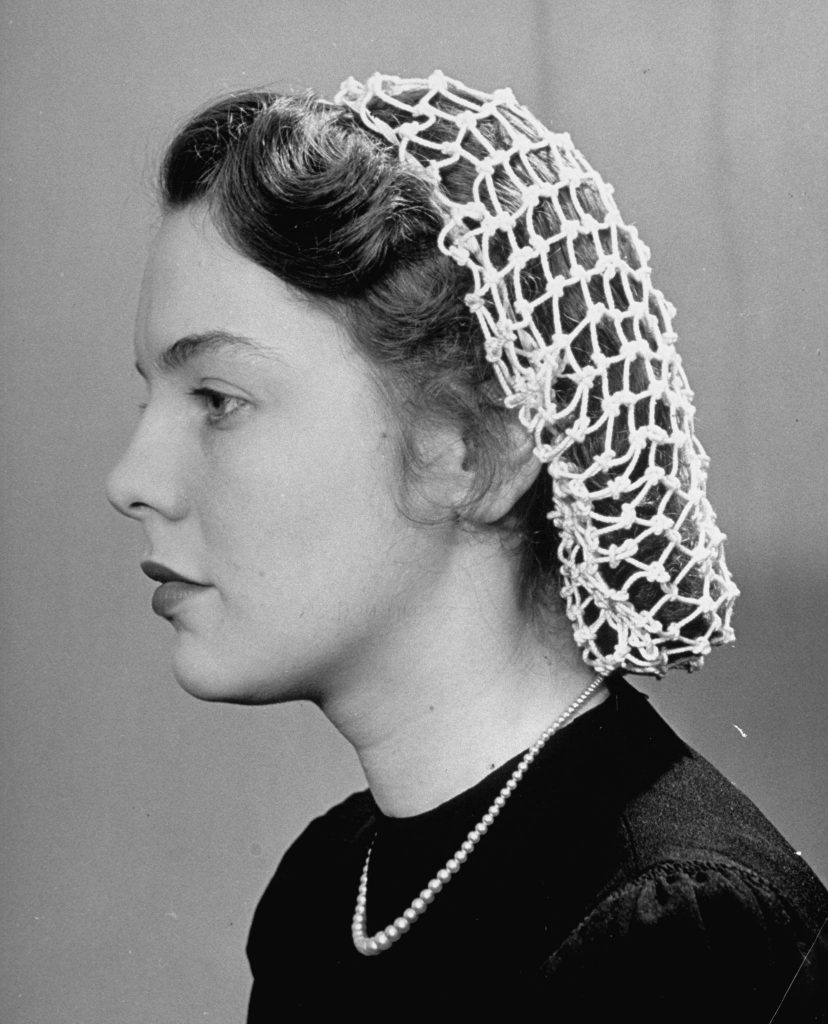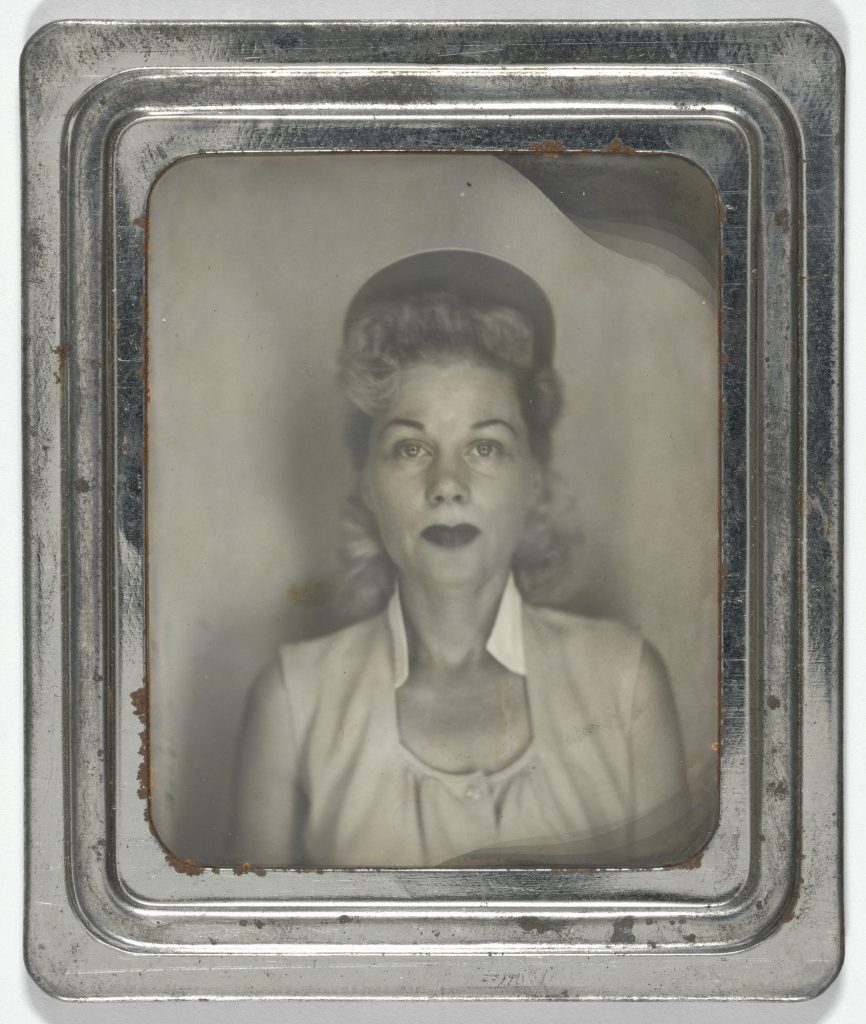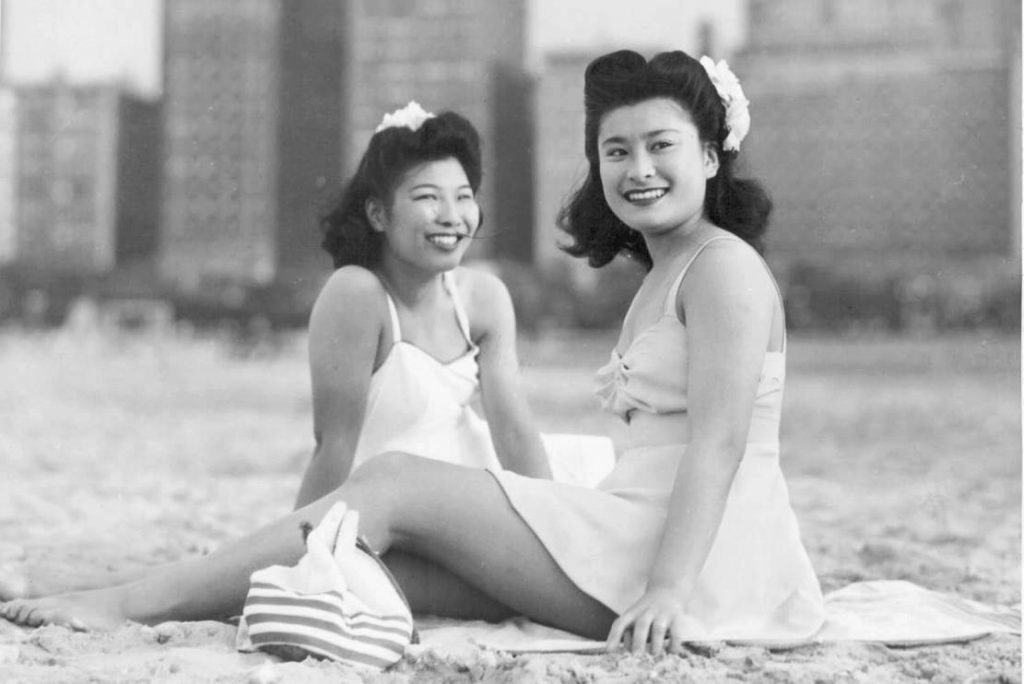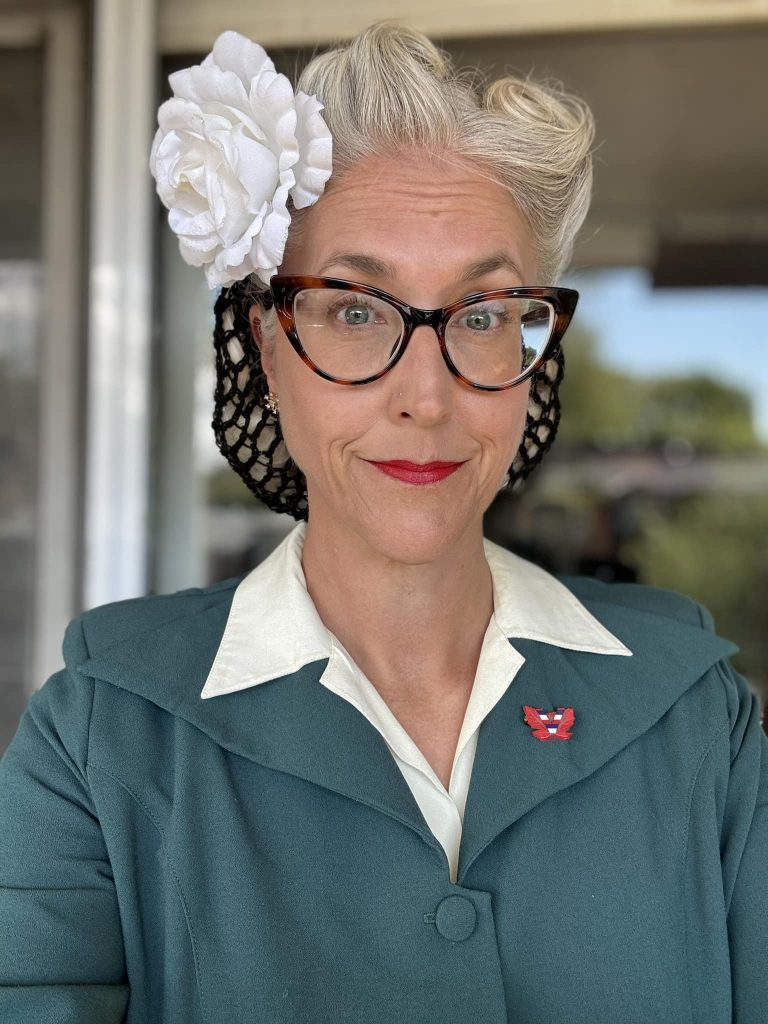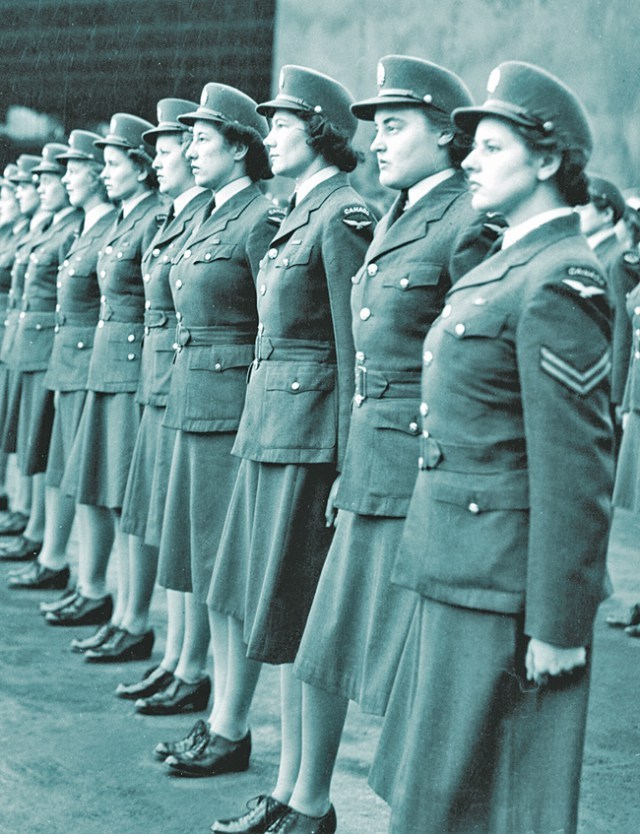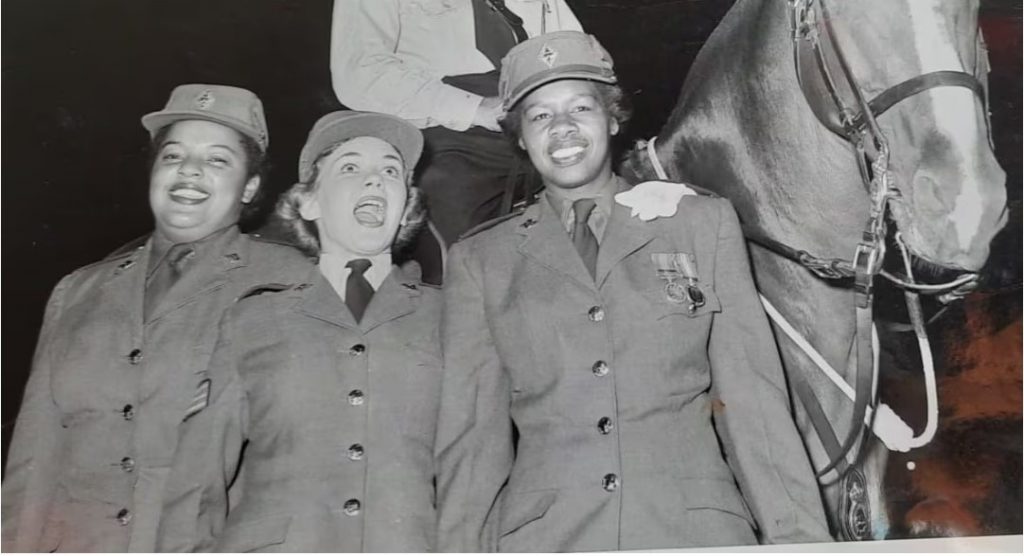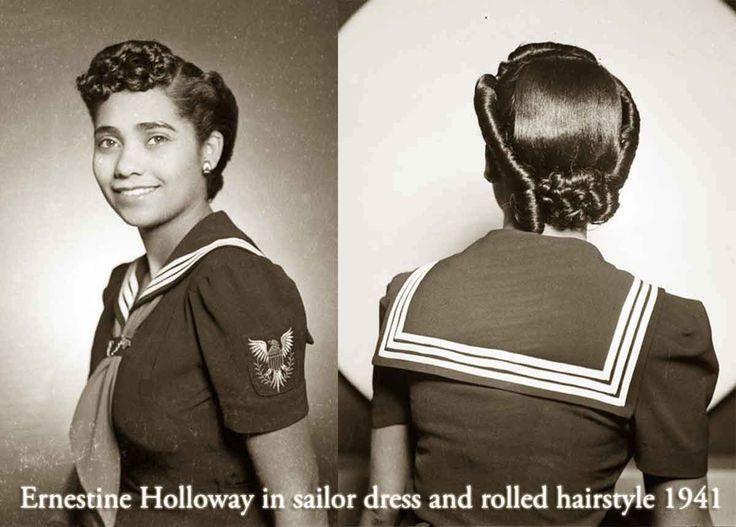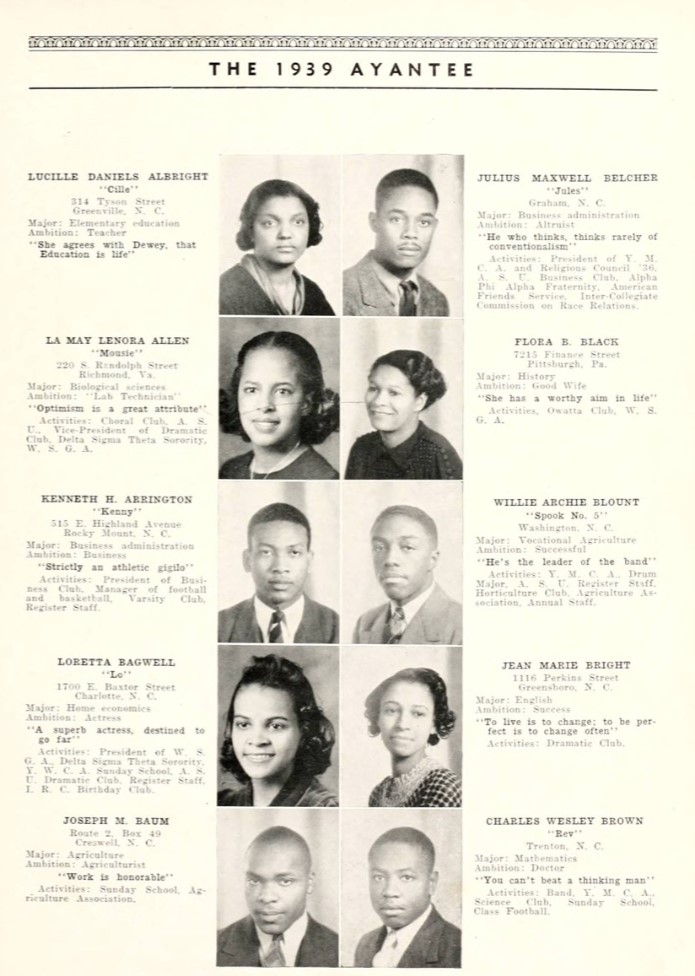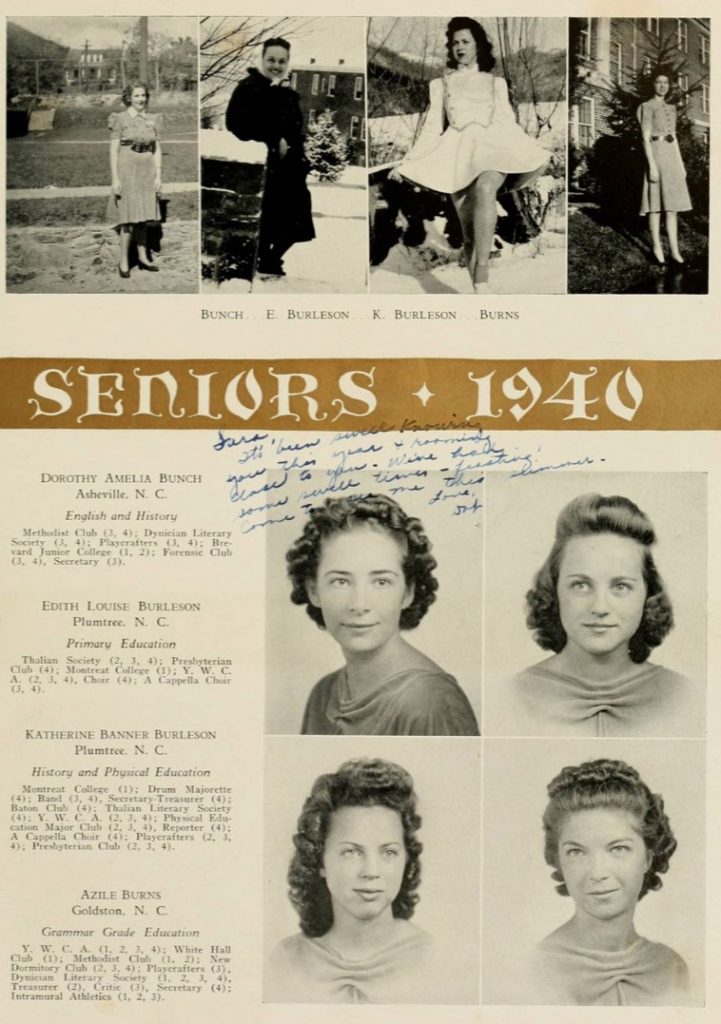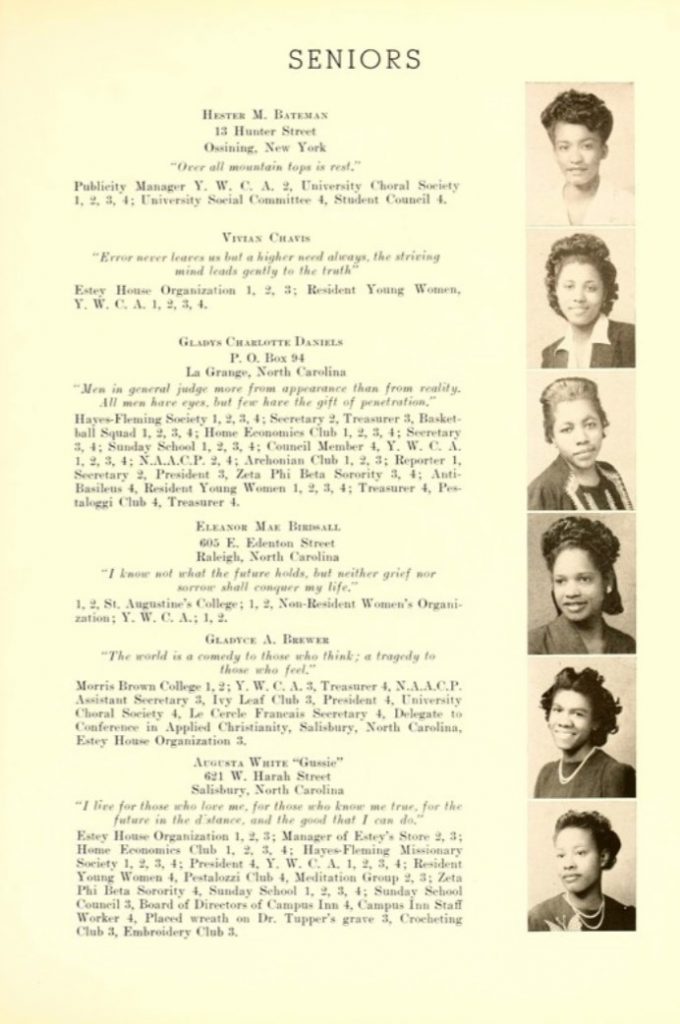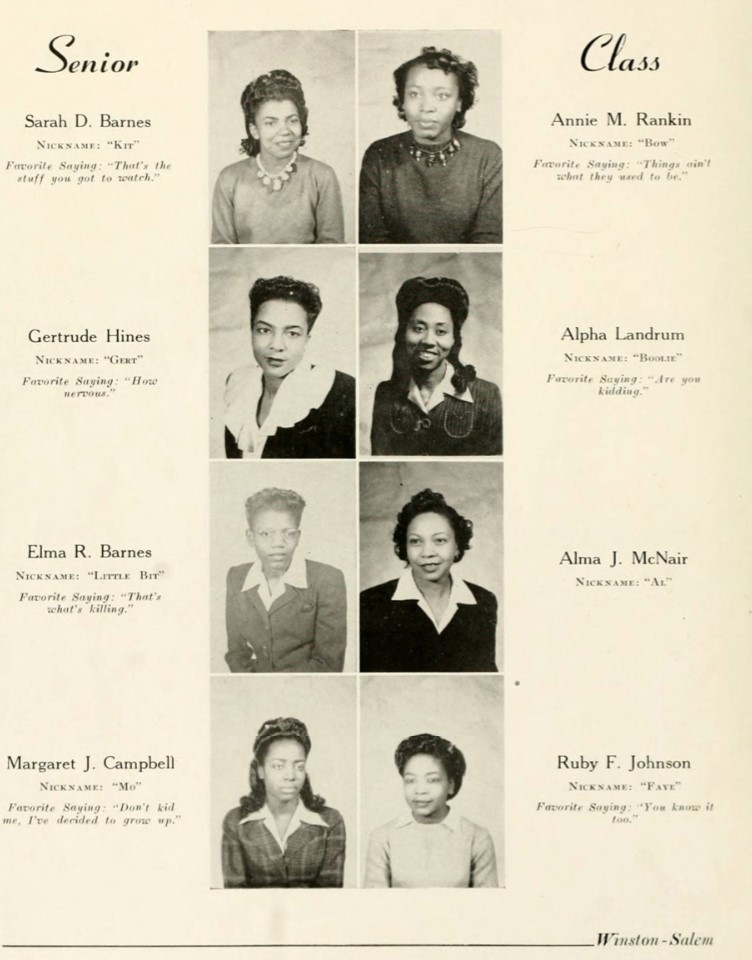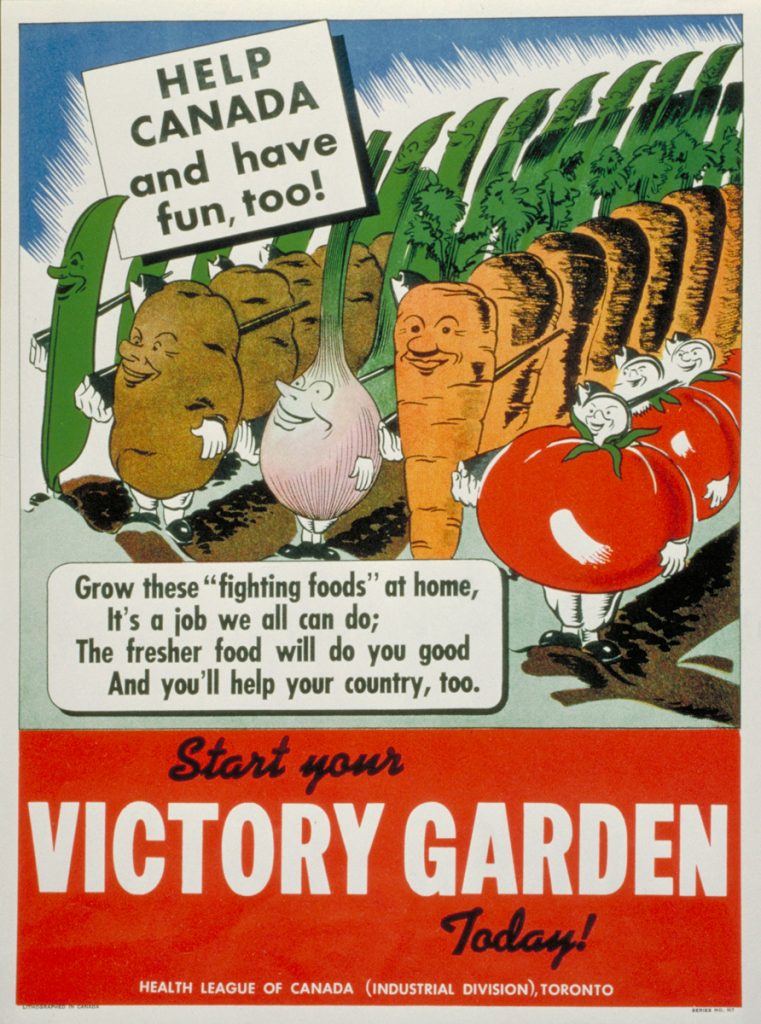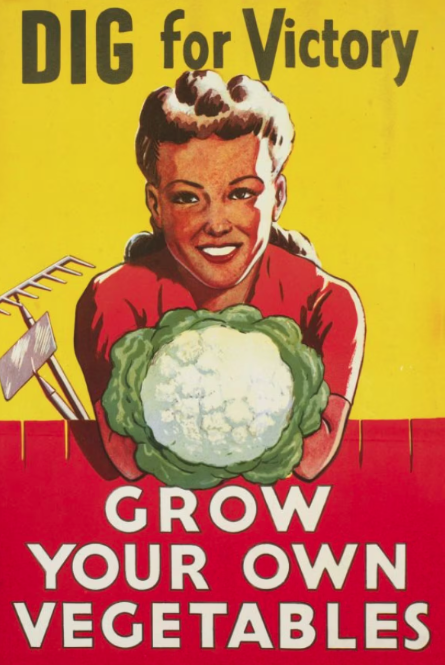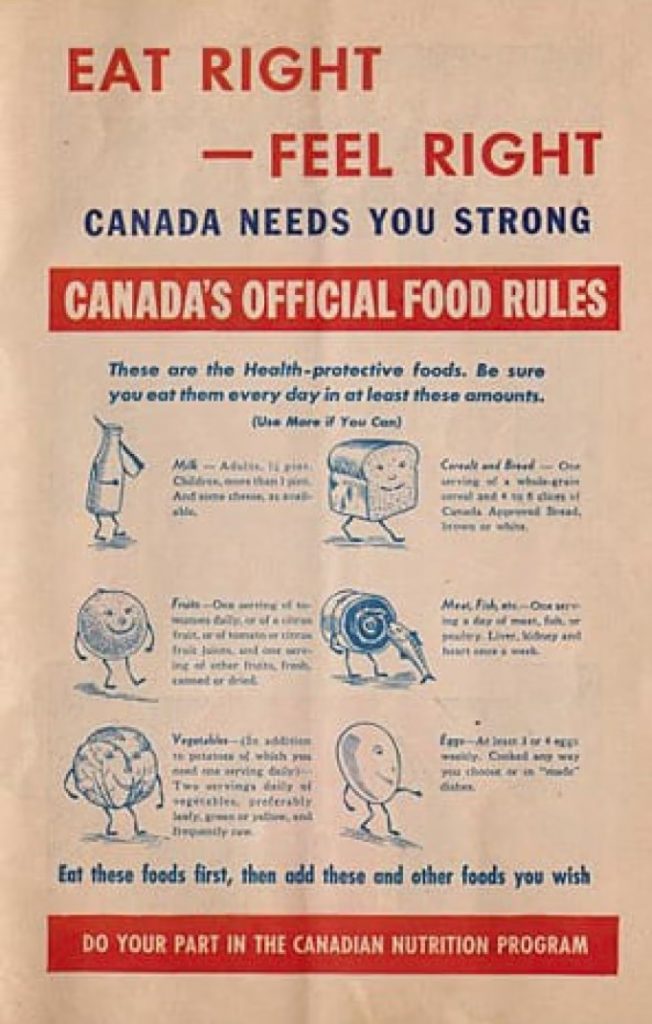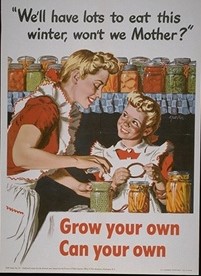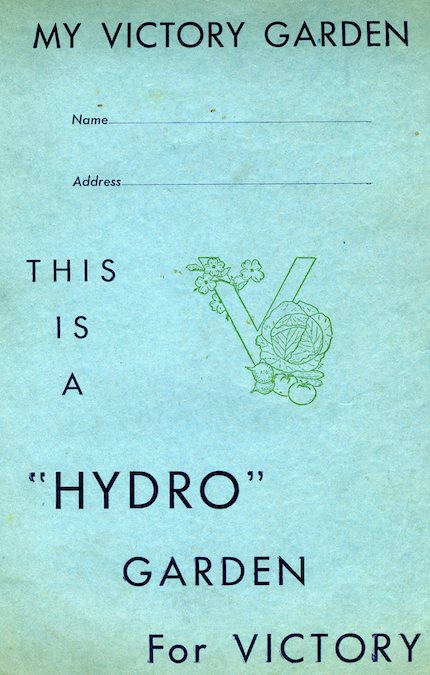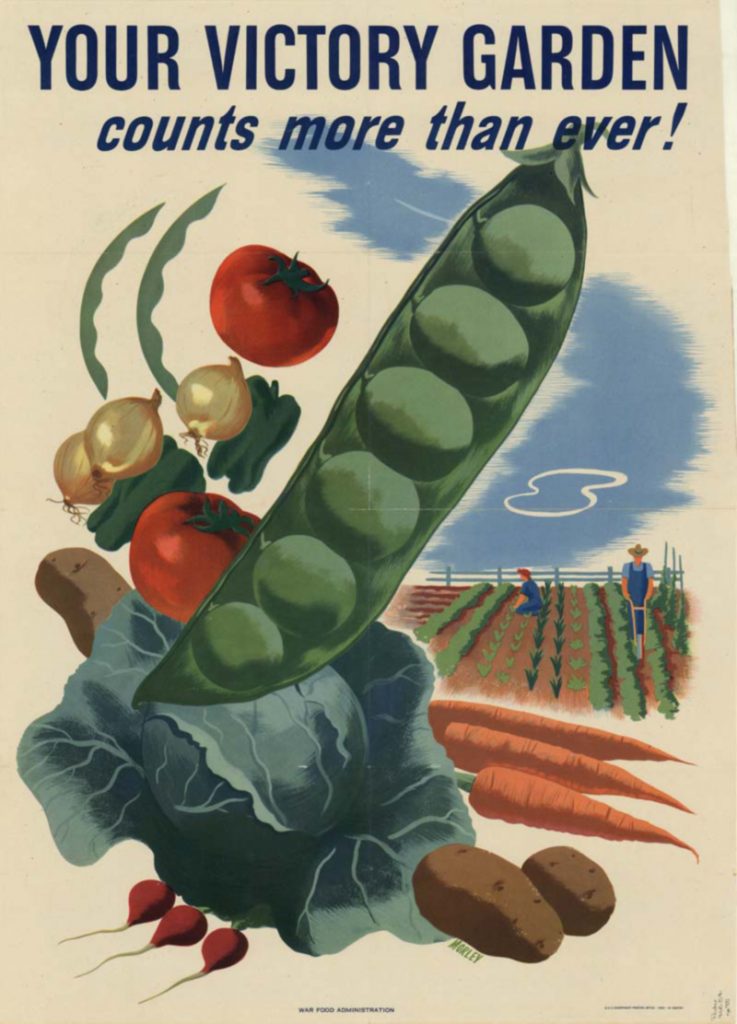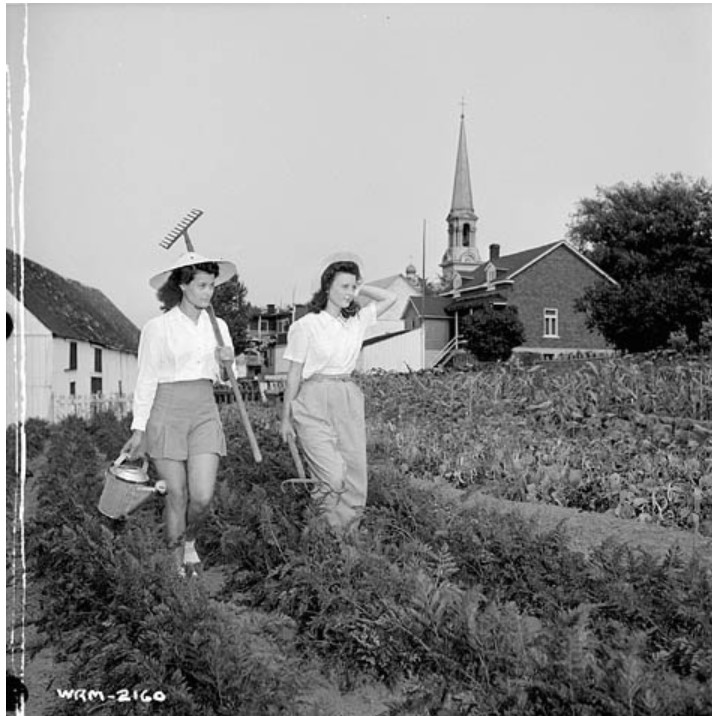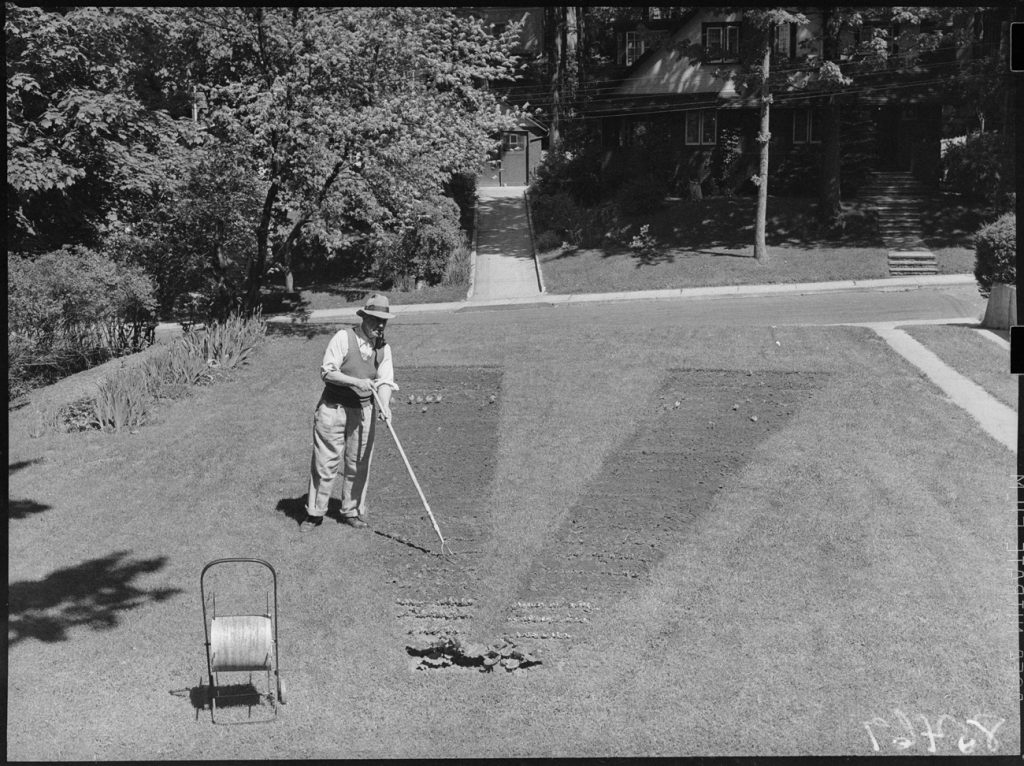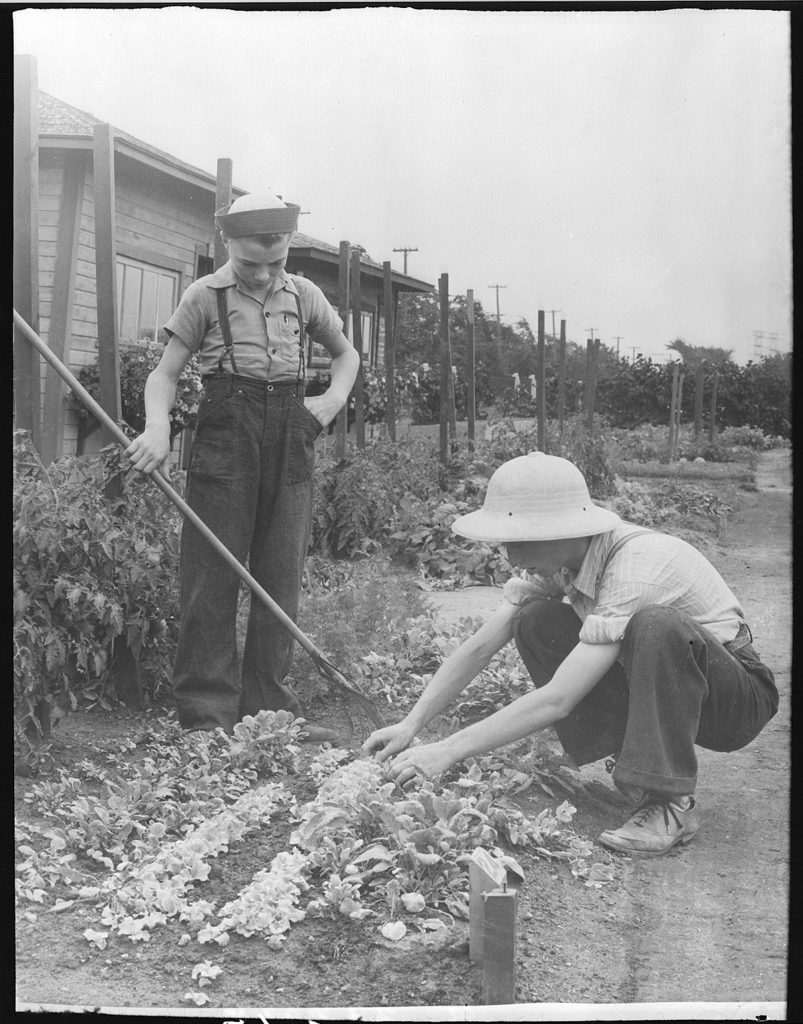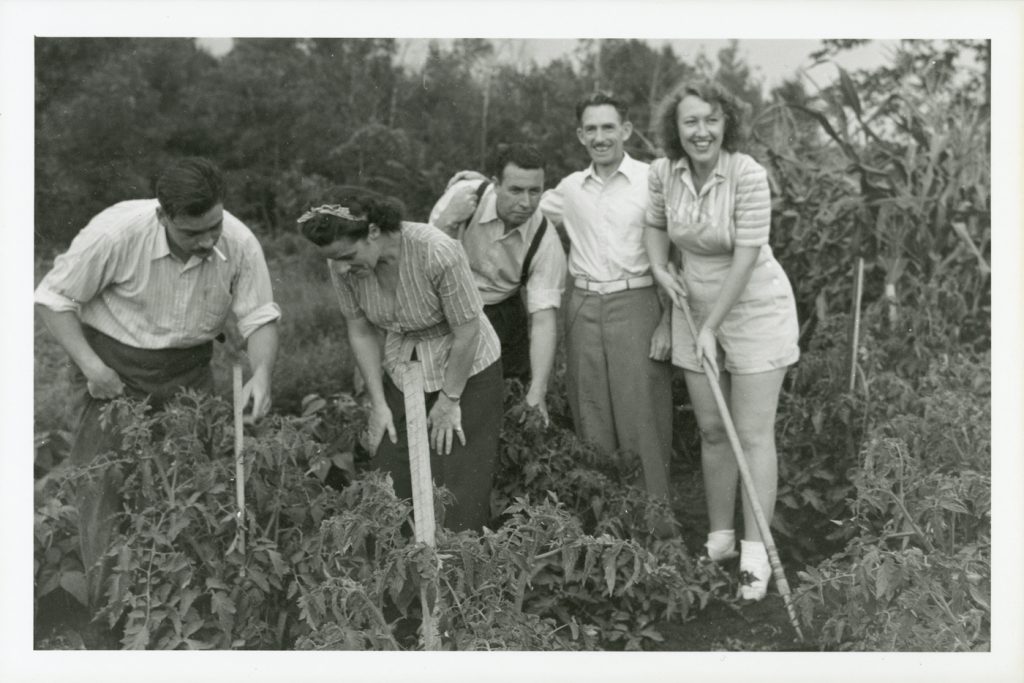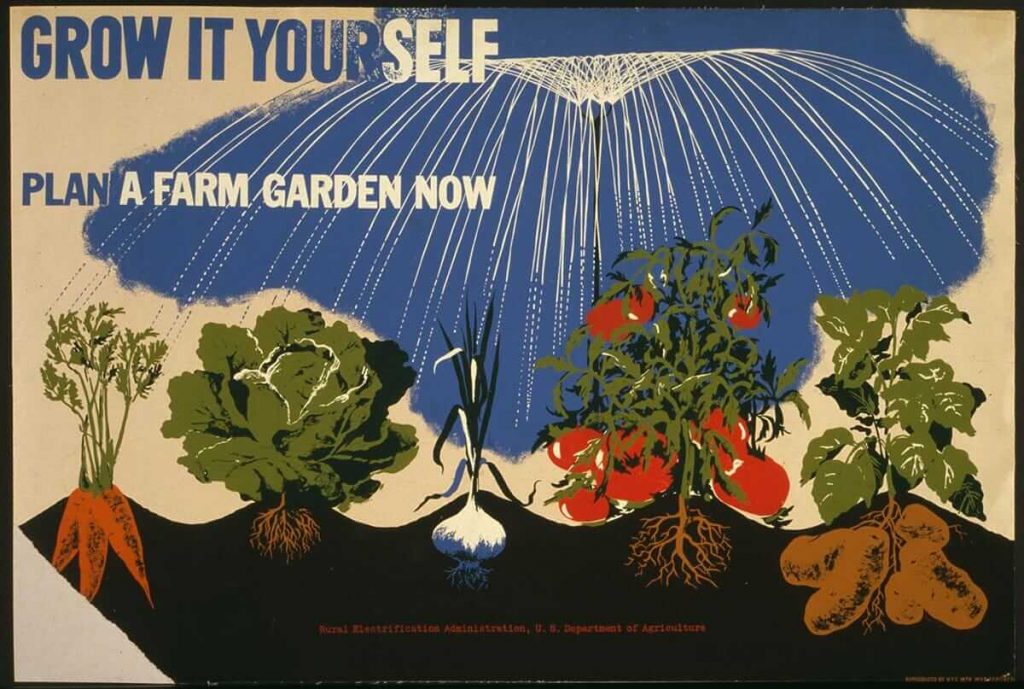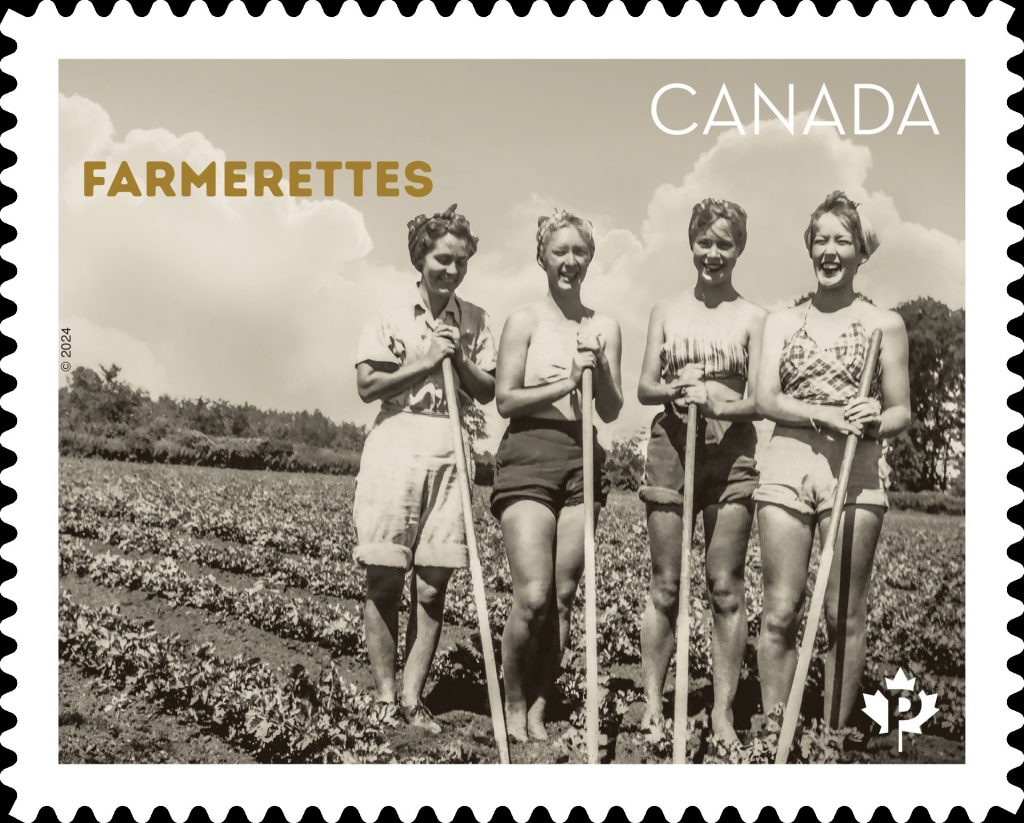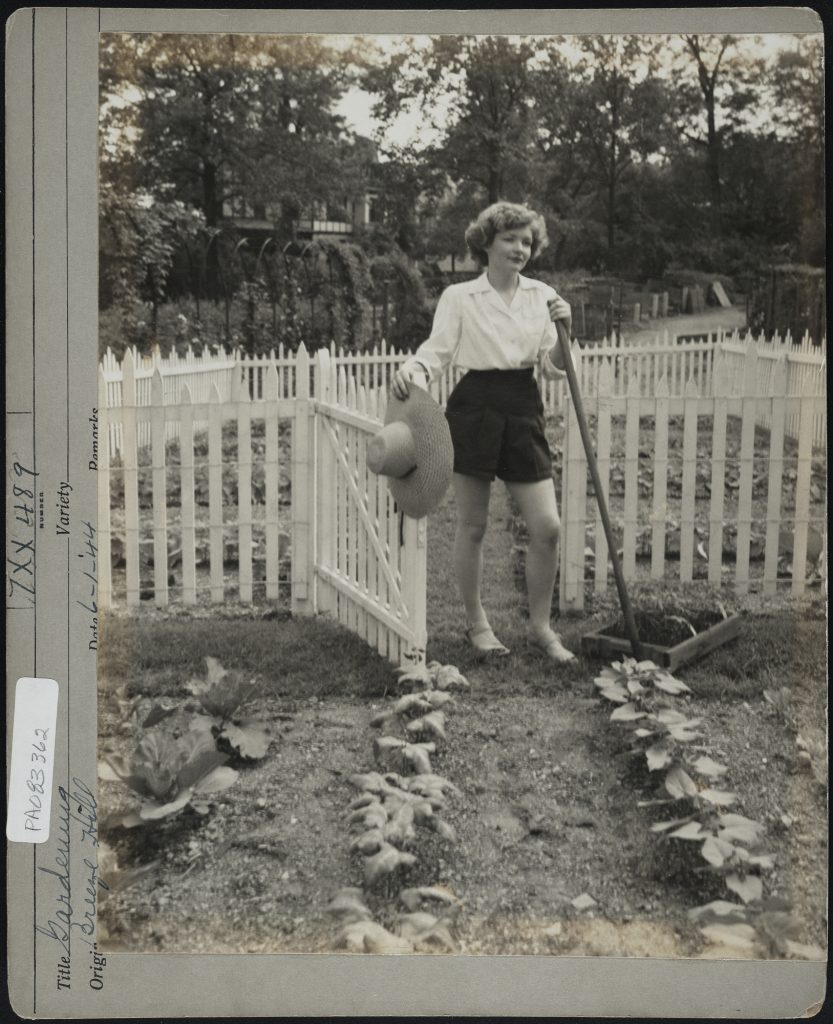On May 8th, 1945, the streets of Canada erupted in joyous celebration as news spread that the Second World War had ended in Europe. Known as V-E Day (Victory in Europe Day & Liberation of the Netherlands), this historic moment was marked by parades, cheering crowds, and spontaneous gatherings from coast to coast—and around the world. Among the jubilant crowds were women of all ages who had stepped up to support the war effort: working in factories and fields, serving overseas, keeping households running, and so much more.
Through it all, they wore their hair in the iconic styles of the 1940s—whether carefully styled, pinned up, or wrapped in turbans and hair scarves. No matter the look,1940s hairstyles were proudly on display, along with their signature red lips.
On the 80th anniversary of V-E Day, today’s post is going to be an overview of vintage photos showcasing WW2 era hairstyles.
Further Reading – Part 1: 1940s Real Life Women’s Hairstyles & Canada Celebrates V-E Day (Victory in Europe Day) May 8th, 1945: The Vintage Photos
Photo: Celebrating VE Day on Bay Street in Toronto vintage photo of 4 women
Further Reading: World War 2 Women’s Contributions & Home Front Posts (I have done A LOT of posts over the years on these topics)
Real-Life Women’s Hairstyles from the WWII Era
Women on the Home Front Hairstyles
During World War II, women who worked in factories, fields, and other essential roles also developed a distinctive look for their hair. Pictured here is Veronica Foster, known as Canada’s ‘Rosie the Riveter,’ demonstrating how to tie a hair scarf (or kerchief)—a practical accessory used to protect hair from hazards while she worked at her place of employment, the Bren Gun Factory (in Toronto).
Read here story here: The Canadian “Rosie the Riveter”-Veronica Foster
The ‘Miss War Worker 1942 Contest’ was held in Toronto, Canada. As you can see, two of the women are sporting ‘bangs’—styled curls or pinned hair—adding a fashionable touch to their turbans and hair scarves. The woman on the right appears to be fully covered for her specific job requirements. On the left is a representative from GECO (General Engineering Company of Canada), which was based in Scarborough, Ontario. You can learn more about these incredible women—and the men who worked alongside them—at the link below.
Further Reading: The Bomb Girls Of Scarborough, Ontario Canada-As Seen Thru Vintage Photographs from the 1940s
Hardworking “Farmerettes” wearing hair scarfs (kerchiefs) to protect their hair from their work on Ontario Canada farms (well most of it).
Further Reading: Canada’s WW2 Home Front History – The Farmerettes
One more “Rosie the Riveter” hairstyle look, as seen on Miss Ethel Mildred Lee. She is a 23-year-old girl born in this country of Chinese parents, is shown at her job as an electrician-helper at the Los Angeles yards of the California Shipbuilding Corporation, where she has worked for almost two years. Photo- January 20, 1944.
Further Reading: Vintage Photos of Women of WW2: How Women Joined the War Effort
Hair Snoods… were a hair accessory in the 1940s for both daytime and work. It was popular in the factories due to the fact that the women had to wear their hair back. This was a great way to do this.
Further Reading: A Vintage Guide to 1940s Hair Accessories
Not all wartime work on the home front was labor-based—there were also morale-boosting roles, like those in the All-American Girls Professional Baseball League, the original “League of Their Own.”
This 1940s photo booth snapshot captures a woman in a baseball uniform, her lips painted red and her hair perfectly curled and set beneath her cap. I can’t say for sure if she played in the league, but she certainly looks the part!
I actually tried to copy this look 2 years ago for a Toronto Blues Jay’s game I attended (see my image after the vintage one).
Further Reading: Lets Play Ball! The All-American Girls’ Professional Baseball League
Another morale-boosting activity was entertaining the troops—just like these young women did in 1941 in Halifax, Nova Scotia, as part of the Marcus Dance Show. This image is a wonderful showcase of classic 1940s hairstyles in action.
This specific traveling show, brought ‘the world’s foremost exposition of female loveliness’ to town, to relieve the tedium and horror that was otherwise known as war.
Further Reading: The Halifax, Nova Scotia Women Volunteers of WW2
Victory Rolls:
The History: There are others in my community who have written excellent in depth blog posts on this topic, so I encourage you after your done with my post to dig deeper into the history of this WW2 hairstyle by visiting their posts that I have linked below.
Vintage Hairstyling.com: Victory Bobs and V Modes… WWII Hairstyles named for morale & History of the Victory Roll
The Queen of Victory Rolls aka Betty Grable. Yooza they are beautiful!
A woman wearing Victory Rolls (I believe she is) for a photo booth shot featuring a backdrop of WW2 warplanes in the sky.
Fun history note for the Victory Roll (associated with this image): One theory associates victory rolls with the aviation aerobatic maneuver of planes that would spin horizontally as a sign of victory or celebration, as the style was supposed to resemble the movements of the aircraft (source).
Source: Etsy-JakeRoebucks
Disclosure: Some of the links on my blog from Etsy are Affiliate Links, meaning, at no additional cost to you, I will earn a commission if you click through and make a purchase.
Victory Rolls on the beach! Fantastic photo of these beautiful Japanese young women smiling on the beach in their swimsuits and victory roll hairstyles (complete with hair flowers).
Further Reading: 1940s Real Life Women’s Hairstyles
Source: Chuckman’s Photos
Here is one more photo of me (the Vintage Inn) in Victory Rolls, hair snood and hair flower for the May 8th, 2025 Toronto VE Day ceremony I recently attended.
Hairstyles for Service Hats
1940s vintage photo of Canadian Women in their Air Force uniforms. Their hair is up and off the neck with curls, rolls (the lady in the middle) or a chignon (a bun at the back of the hair). Not the only style, but what we are seeing in this photo.
Further Reading: WW2 Air Force Uniforms for Canadian Women”-Guest Blog Post
Three women in their Canadian Army Corps uniforms pose together with a man on a horse. As you can sort of see their hair is rolled back in a Gibson Roll.
No hat on Ernestine Holloway who is sporting a sailor dress but her outstanding rolled hairstyle would allow for a cap to be placed neatly. This 1941 photo is from Tennie Harris.
Source: Pinterest
Even with combat hats on, one’s hair was always done in some nice way, even if that way was just for practical reasons (like our rolled hairstyle aka the Gibson roll on the woman on the right).
Nursing sisters of No.10 Canadian General Hospital, Royal Canadian Army Medical Corps, having a cup of tea upon arriving at Arromanches, France, 23 July 1944 (source).
Further Reading: The Canadian Nursing Sisters of WW2
One of my favorite resources for photos is vintage yearbooks. If you’ve been following me for a while, you’ll know I’ve done several posts on this very topic. When it comes to vintage hairstyles, these yearbooks are an absolute gold mine! Honestly, I could devote my entire blog to exploring every single page and still have enough content to last a century—but for today, I’m showing just a few from 1939-1945 (restraint is tough around here, HA!).
1939 Appalachian State University-“The Rhododendron” yearbook featuring Junior university students and their 1930s hairstyles (men and women).
Source: DigitalNC
The Ayantee yearbook from North Carolina Agricultural and Technical State University, featuring the Senior class of 1939.
Source: DigitalNC
Anther yearbook from Appalachian State University-“The Rhododendron” 1940 Seniors (the right). On the left we have the class of 1940 from “The Eagle” yearbook at North Carolina Central University.
Source: DigitalNC
Note: 1941-1943. This section will be completed when I stop having back end issues with WordPress. Sorry readers!
1944 “White Heather” yearbook from Flora Macdonald College, Red Springs North Carolina.
Source: DigitalNC
1944 “The Bear” yearbook Seniors from Shaw University.
Source: DigitalNC
The Ram yearbook from historically Black College, Winston-Salem State University featuring the Senior class of 1945. I am in love with the necklaces in the photos.
Source: DigitalNC
1945 ‘Sights and Insights’ yearbook from Salem College, NC. I love the hair frizz on our lady on the bottom right. Women in the 1940s were just like us, struggling with their hair to be perfect (she looks wonderful still).
Source: DigitalNC
I hope you enjoyed this brief overview of WWII-era hairstyles! This post was designed to highlight some of the popular styles seen during the war years. While it’s not an exhaustive list, I think it offers a great snapshot of the era. I’d love to hear your thoughts—feel free to share your favorite looks in the comments below!
Thanks for dropping by!
Liz

